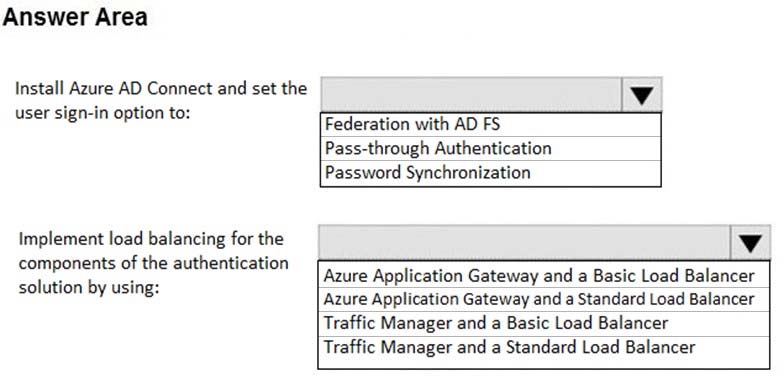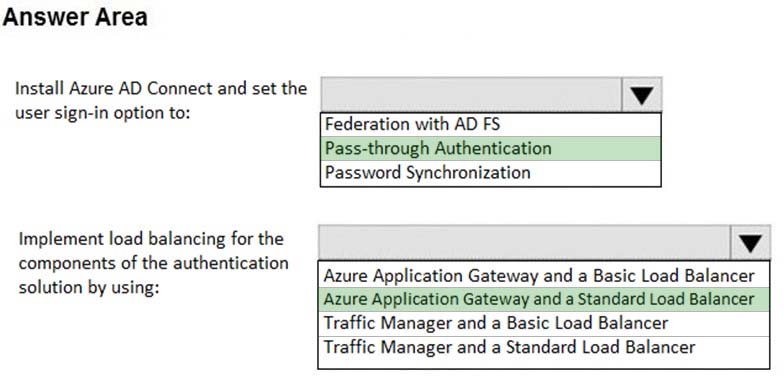

HOTSPOT -
You need to recommend a solution for the users at Contoso to authenticate to the cloud-based services and the Azure AD-integrated applications.
What should you include in the recommendation? To answer, select the appropriate options in the answer area.
NOTE: Each correct selection is worth one point.
Hot Area:

Moon
Highly Voted 5 years, 4 months ago6ppongi
Highly Voted 5 years, 8 months agoPatMan
5 years agoonlyfunmails
5 years, 5 months agoPTC
5 years agoLFWGD
4 years, 9 months agoglam
Most Recent 4 years, 3 months agosallymaher
4 years, 4 months agoazurecert2021
4 years, 4 months agohubekpeter
4 years, 4 months agosanketshah
4 years, 5 months agoAhmedAL
4 years, 8 months agodilipsub
4 years, 8 months agoAfz
4 years, 9 months agoRooh
4 years, 9 months agolalalala1
4 years, 9 months agoAnil001
4 years, 10 months agoexams0123456
4 years, 10 months agoswip
4 years, 10 months agoJer0i
4 years, 10 months agoHarkonnen
4 years, 11 months ago